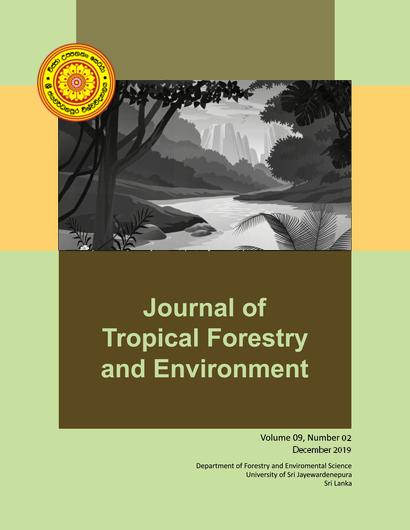Grain Size and Chemical Composition of Sediments to Determine the Governing Geochemical Processes in Fluvial Environments
DOI:
https://doi.org/10.31357/jtfe.v9i2.4463Abstract
The environmental impact on the river system and the bay or a tidal flat area is of significance since these environments act as sinks of pollutants. The river system gradually gathers the material that flows along the river and settles it at the downstream area. The geochemistry of sediments of the rivers and the Bay or tidal area are signatures of the mass transfer process that occur in fluvial environments. Thus, the processes such as provenance, maturity of sediments, weathering, climatic implications, sedimentary processes, heavy mineral concentrations, sorting and mixing effect, grain size variation, transport and downstream accumulation and effect of tributaries can be determined using geochemistry. The major oxides and trace element concentration of the sediments of the river and the Bay or Tidal area is thus very important to determine the fluvial processes. Comparison of two different fluvial environments with different climatic conditions and geology where one consists of the river with a Bay in Sri Lanka and the other consisting of a river with a tidal flat in Japan is thus conceded. The environmental assessment using elements of sediments in such environments have been effective due to the possibility of being able to identify the fluvial processes that are affected by the river and Bay or tidal sediments in two different systems.Downloads
Published
2020-02-11
How to Cite
Young, S. (2020). Grain Size and Chemical Composition of Sediments to Determine the Governing Geochemical Processes in Fluvial Environments. Journal of Tropical Forestry and Environment, 9(2). https://doi.org/10.31357/jtfe.v9i2.4463
Issue
Section
Feature Article
License
The publisher retain the copyrights of contents published, and all open access articles are distributed under the terms of the Creative Commons Attribution-Noncommercial-No Derivative Works 3.0 Unported License[U1], which permits unrestricted use, distribution and reproduction in any medium, provided that the original work is properly cited.
You can download the Legal Code for this License at: http://creativecommons.org/licenses/by-nc-nd/3.0/legalcode


